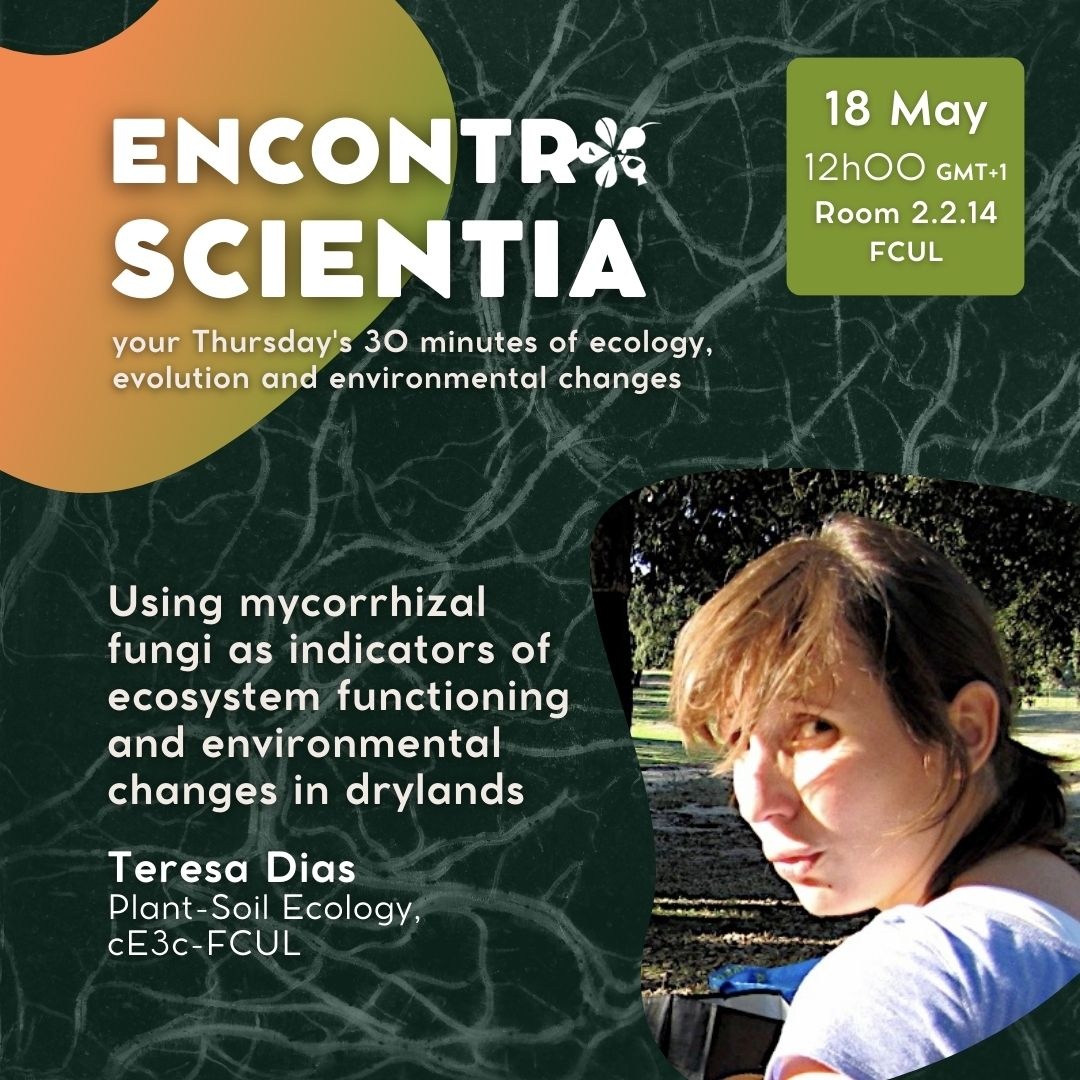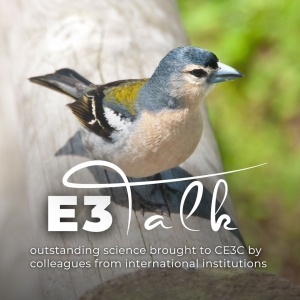Encontro Scientia with Teresa Dias (Plant-Soil Ecology)
18 May 2023 . 12h00 (GMT+1)
2.2.14 Room, Faculty of Sciences of the University of Lisbon
Online access: LINK; password - 425173
Whether in a forest, pasture or even in a desert, plants are arranged in a complex architecture from the canopy to the root system. Each individual plant is characterized by a specific genome, but its phenotype results from dynamic interactions with the environment and its ‘neighbors’. The interactions with (and mediated by) mycorrhizal fungi are essential for ecosystems’ functioning. Besides the well-known improvement in plant nutrition, other examples of mycorrhizal benefits to the plant include pathogen suppression, pollination enhancement, herbivore protection and improved stress tolerance.
In this talk, I will share our main findings on the use of mycorrhiza (arbuscular mycorrhiza – AMF; and ectomycorrhiza) as ecosystem engineers and indicators of environmental changes. In drylands, where soil organic matter is very low, plants constitute a source of organic carbon (20–50% of the photosynthates are exuded through roots) for the soil microbes. As AMF are a main recipient of the organic carbon, and AMF hyphae are leaky and release metabolites into the hyphosphere, AMF selectively promote certain microbes. As a result of this selective soil microbial recruitment, AMF play a crucial role in building belowground functional networks which modify plant performance and promote ecosystem functioning. Any factor that affects the ‘pipeline’ of plant-derived carbon will affect plant-microbe associations, plant and soil microbial communities, and thus ecosystem functioning. Our examples of losses in services to plants and ecosystem functioning include an overall reduction in soil multifunctionality due to high herbivory pressure, and a slowdown in nutrient cycling and mineral weathering due to nitrogen enrichment.
We have been experiencing some technical issues regarding the authentication/connection to the Zoom platform through FCCN. For that, we apologise for any difficulties during the transmission.
Tags: PSE Encontro Scientia mycorrhiza fungi soil plant-microbe associations ecosystem engineers drylands






